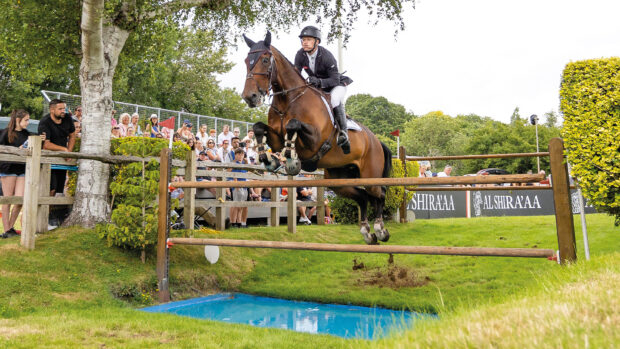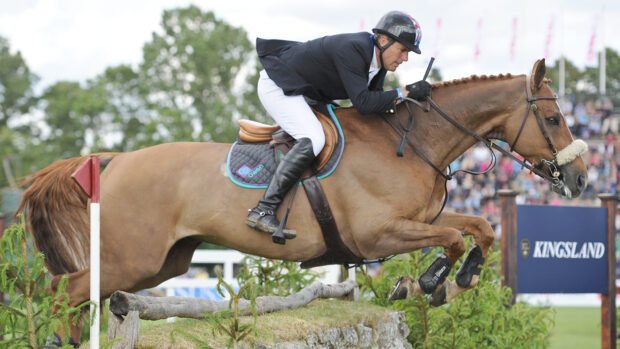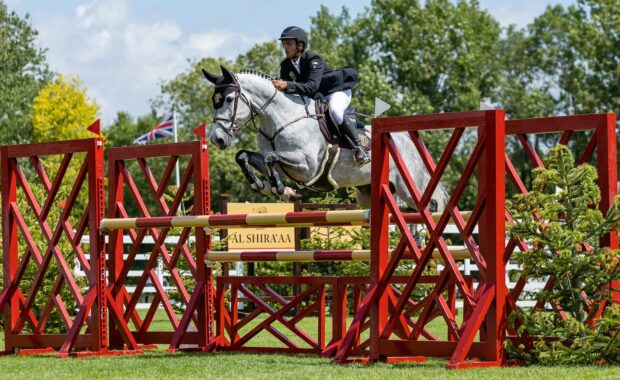Showjumping has changed and evolved in the 54 years since the All England Jumping Course first opened its doors.
Hickstead in 1960 already had its vast International Arena with the fixed obstacles within; but there were no towering permanent grandstands, no purpose-built offices, no rows and rows of tradestands nor 5 other rings hosting showjumping and showing classes from dawn until dusk.
But the sport was in its heyday in the 1960s, horses and riders were household names, and the sport was still immersed in the cultures and traditions of the hunting field.
“Back then there was a close relationship between hunting and showjumping,” said Irish international showjumper and 3-time Derby winner Captain John Ledingham (pictured, above). “The Hickstead Derby itself featured the tests of the hunting field held within the confined space of a stadium.”
One of the biggest changes in the sport has been the increasing technicality of the courses, with more combinations, complex distances, lighter poles and shallower cups.
“Back then, you had big fences, lots of individual fences, and lots of straight lines. The fences were straight off the hunting field — posts and rails, gates and walls,” adds John.
The type of horses seen in showjumping has changed, too. In the early days the sport comprised mainly of Irish horses and Thoroughbreds, but the arrival of the modern European warmblood changed this.
Before the war, continental horses were predominantly bred for carriage driving or trotting, while European hunting differed from Britain, with its open farmland with few rails, ditches and banks to contend with. As a result, when purpose-bred showjumpers and dressage horses proliferated on the continent, a very different type of sport horse developed.
In recent years, showjumping has modernised even further. Grass rings have become rarer, with uniform, rectangular flat arenas with carefully manicured, synthetic surfaces becoming the norm. Hickstead has altered too, with the extensive groundwork in 2011 meaning the International Arena offers all-weather going while still retaining a grass surface.
But even though some of the top poles have been switched to lighter equivalents, and safety cups are now used in place of metal ones, the substantial course and sloping gradients at Hickstead have barely changed at all since that very first Derby. To jump a clear round is as demanding for today’s rider as it was back in 1961.
In the 5 decades since then, an array of horses have won Hickstead’s most iconic class, with varying equine types and riders of all shapes, sizes and styles.
From pint-sized ponies to towering warmbloods, from 20-year-old lady riders to 60-year-old men, there have been plenty of different Derby winners over the years.
Showjumping has changed, and naturally Hickstead has changed with it, while still managing to retain its special quirks and traditional charms. But as John Ledingham points out, one thing about the Derby will always remain the same: “The bold, big jumping but careful horse is still winning.”
Find out how you can get tickets for this year’s Equestrian.com Hickstead Derby (25-29 June 2014) and what the Hickstead Derby Community can offer you



